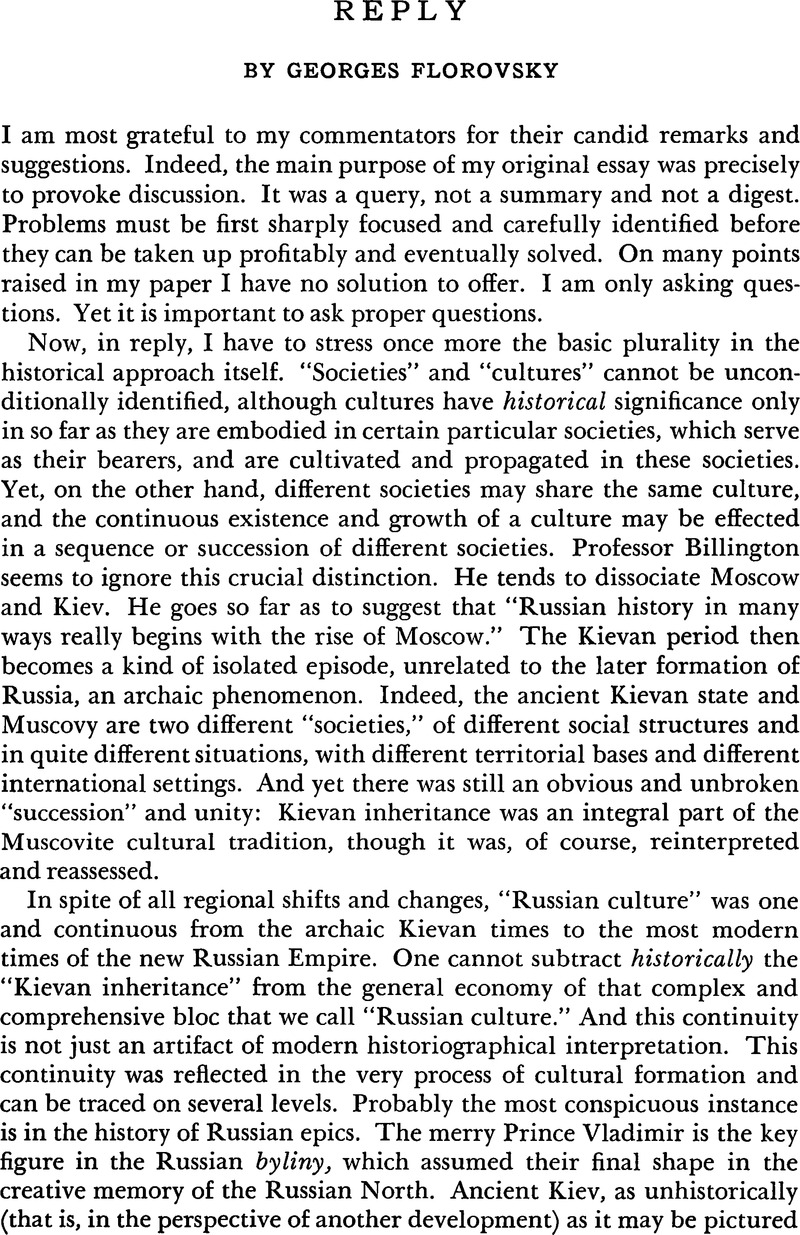
1 See, for instance,  (Moscow and Leningrad, 1958); cf. Alexandre
V. Soloviev, , Le Nom Byzantine de la Russie (The Hague: Mouton & Co., 1957)Google Scholar, and his earlier studies quoted in this essay. I have no intention of giving here a complete bibliography on the subject.
(Moscow and Leningrad, 1958); cf. Alexandre
V. Soloviev, , Le Nom Byzantine de la Russie (The Hague: Mouton & Co., 1957)Google Scholar, and his earlier studies quoted in this essay. I have no intention of giving here a complete bibliography on the subject.
2 On the distinction between “societies” and “cultures” see the valuable suggestions of Pitirim A. Sorokin, , Social Philosophies of an Age of Crisis (Boston, 1951), pp. 205 ffGoogle Scholar.; cf. also his article “Toynbee's Philosophy of History, ” in The Pattern of the Past: Can We Determine It? (Boston, 1949), pp. 127 ff.
3
![]() . (Moscow and Leningrad, 1961), p. Leningrad.
. (Moscow and Leningrad, 1961), p. Leningrad.
4
![]() (Moscow and Leningrad, 1961).
(Moscow and Leningrad, 1961).
5 Cf. Obolensky, Dmitri, “Russia's Byzantine Heritage, ” in Oxford Slavonic Papers, Vol. I (Oxford, 1950)Google Scholar; reprinted in Selection, ed. Cecily Hastings and Donald Nicholl, II (London: Sheed and Ward, 1954), 87-123.